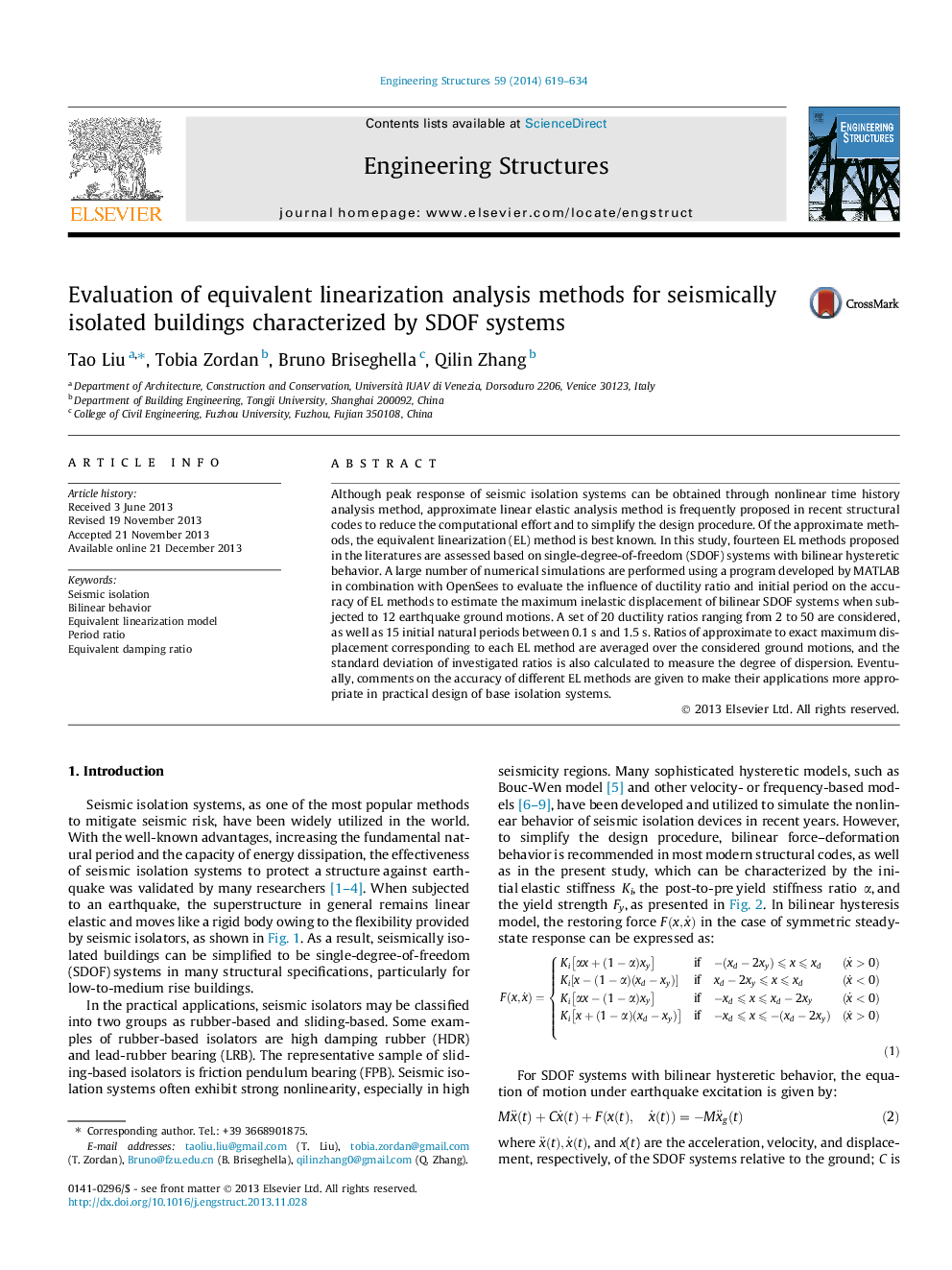| Article ID | Journal | Published Year | Pages | File Type |
|---|---|---|---|---|
| 6740956 | Engineering Structures | 2014 | 16 Pages |
Abstract
Although peak response of seismic isolation systems can be obtained through nonlinear time history analysis method, approximate linear elastic analysis method is frequently proposed in recent structural codes to reduce the computational effort and to simplify the design procedure. Of the approximate methods, the equivalent linearization (EL) method is best known. In this study, fourteen EL methods proposed in the literatures are assessed based on single-degree-of-freedom (SDOF)Â systems with bilinear hysteretic behavior. A large number of numerical simulations are performed using a program developed by MATLAB in combination with OpenSees to evaluate the influence of ductility ratio and initial period on the accuracy of EL methods to estimate the maximum inelastic displacement of bilinear SDOF systems when subjected to 12 earthquake ground motions. A set of 20 ductility ratios ranging from 2 to 50 are considered, as well as 15 initial natural periods between 0.1Â s and 1.5Â s. Ratios of approximate to exact maximum displacement corresponding to each EL method are averaged over the considered ground motions, and the standard deviation of investigated ratios is also calculated to measure the degree of dispersion. Eventually, comments on the accuracy of different EL methods are given to make their applications more appropriate in practical design of base isolation systems.
Related Topics
Physical Sciences and Engineering
Earth and Planetary Sciences
Geotechnical Engineering and Engineering Geology
Authors
Tao Liu, Tobia Zordan, Bruno Briseghella, Qilin Zhang,
